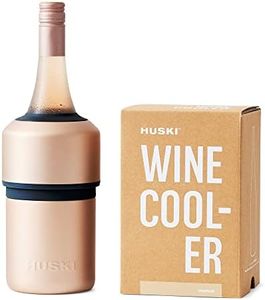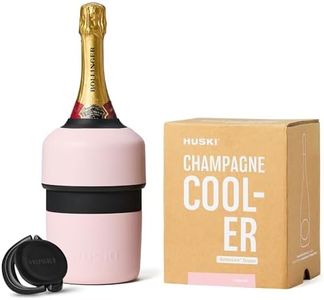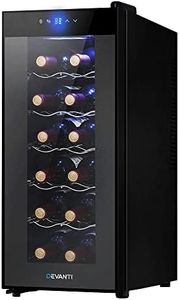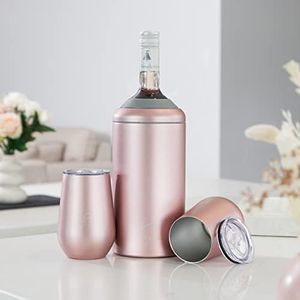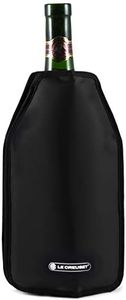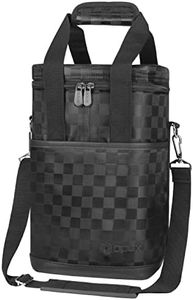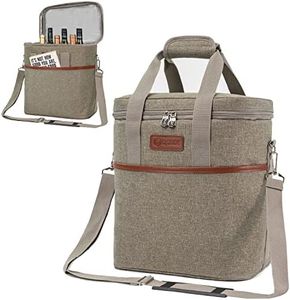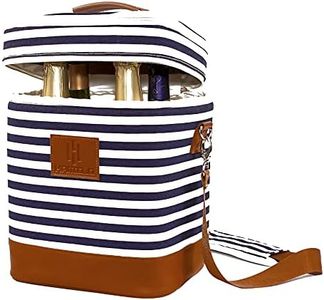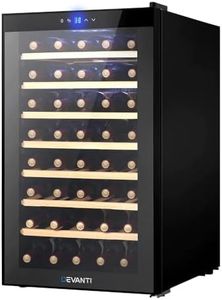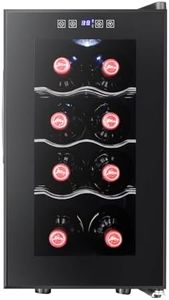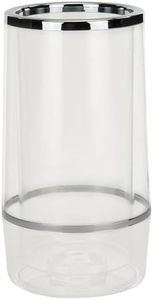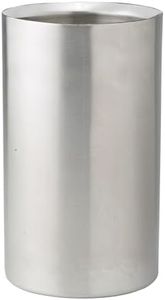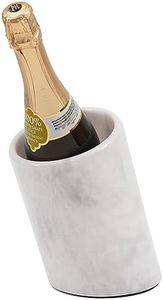We Use CookiesWe use cookies to enhance the security, performance,
functionality and for analytical and promotional activities. By continuing to browse this site you
are agreeing to our privacy policy
10 Best Wine Coolers
From leading brands and best sellers available on the web.Buying Guide for the Best Wine Coolers
Choosing the right wine cooler can help you store your wine at the perfect temperature, enhancing its flavor and longevity. To pick the best wine cooler for your needs, consider how much wine you plan to store, where you'll place the unit, and any features that would make storing and serving your wine easier. Understanding the main specifications will help you compare options and find a model that fits both your lifestyle and wine habits.CapacityCapacity tells you how many standard wine bottles a cooler can hold. This is important because buying a cooler that's too small means you'll run out of space, while one that's too large could waste energy and space. Wine cooler capacities are generally grouped as small (up to about 12 bottles), medium (12–30 bottles), and large (more than 30 bottles). If you only have a few bottles at a time or have limited space, a small cooler may be enough. For those building a collection or entertaining more often, a medium or large cooler is a better fit.
Temperature RangeThe temperature range indicates how cold or warm the cooler can keep your wine. This matters because different types of wine, like reds, whites, and sparkling wines, taste best at certain temperatures. Some coolers offer a narrow range just for one type, while others provide a broader or multiple-zone range to fit different wines. If you mostly drink one type of wine, a single-zone cooler with a fitting range is fine. If you have a mix of reds and whites, look for wider ranges or dual-zone models that let you set two temperatures.
Temperature ZonesTemperature zones refer to the number of separate areas in a cooler where you can set different temperatures. This spec is important for wine lovers who enjoy both red and white wine, as each needs its own storage condition for peak flavor. Coolers can have a single zone (one temperature across all bottles) or dual/multi-zone (different temperatures in separate compartments). Choose single-zone if you only drink one style of wine regularly, or dual-zone if you want the flexibility to store reds and whites at their ideal temperatures simultaneously.
Size and Installation TypeThe size and installation type tell you how big the cooler is and whether it’s designed to stand alone or fit under counters. This matters because your available space and home layout will determine which models will fit. There are compact, countertop models, freestanding units that can go anywhere, and built-in/under-counter options made to slide into cabinetry. If you need a small cooler for tight spaces, look for compact or countertop models. For kitchens with built-in spaces, pick an under-counter design. Freestanding units are best if you want flexibility in placement.
ShelvingShelving refers to the style and material of the wine racks inside the cooler. Sturdy, well-designed shelves help keep bottles secure and make them easier to access. Shelves can be fixed or sliding, and usually made of wire, wood, or metal. Sliding shelves are easier to load but may hold fewer bottles, while fixed racks offer more stable storage. If you regularly rearrange your collection or want easy access, sliding shelves may be best. For long-term storage, sturdier, fixed shelves may be preferable.
Noise LevelNoise level tells you how loud the cooler is while operating. This can be important if you plan to keep it in living spaces, like a kitchen or living room, where a noisy unit could be disruptive. Coolers use either compressor or thermoelectric cooling; thermoelectric models are usually quieter but may struggle in warm rooms, while compressor models cool more efficiently but can be louder. If silence is important to you, check for models that note low decibel ratings or are described as quiet, especially if placing in common areas.
Humidity ControlHumidity control is about the cooler’s ability to keep the air moist enough to prevent corks from drying out, which can affect the wine’s quality. While many casual users might not notice a difference, serious collectors or those storing wine long-term should look for this feature. If you plan to age wines for years, a cooler with good humidity control is helpful. For short-term storage or quickly consumed bottles, this feature isn’t as critical.
Door Style and UV ProtectionDoor style relates to whether the wine cooler’s door is solid or glass, and if it has UV protection. UV light can damage wine, so a cooler with UV-blocking glass or a solid door is best for rooms with lots of sunlight. Glass doors let you display your collection, but always check for mention of UV protection. If storing coolers in bright rooms or for long periods, prioritize UV protection, while in darker rooms, this is less important.
